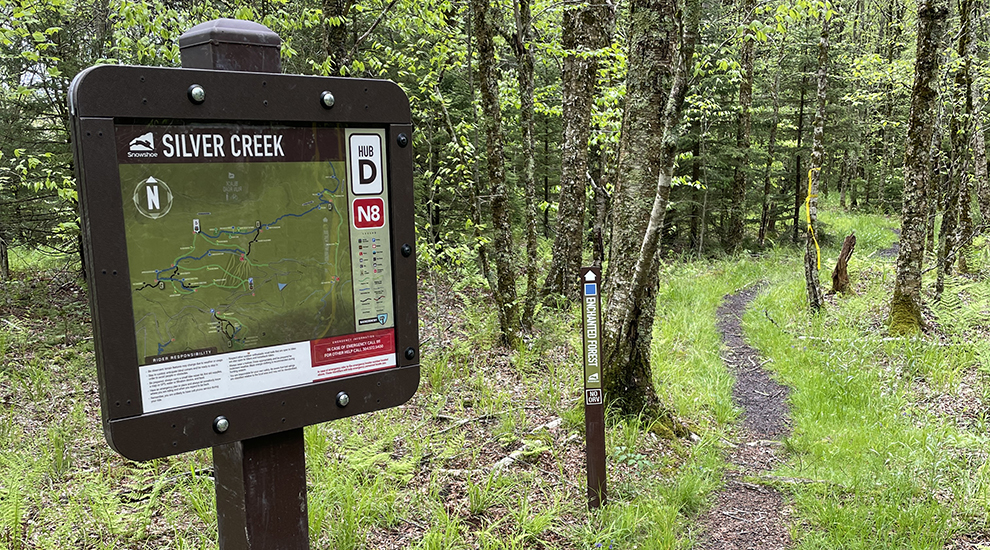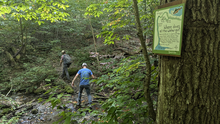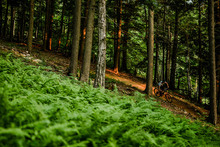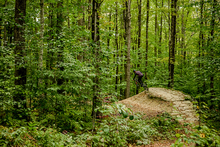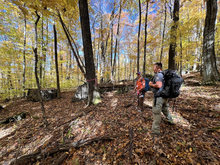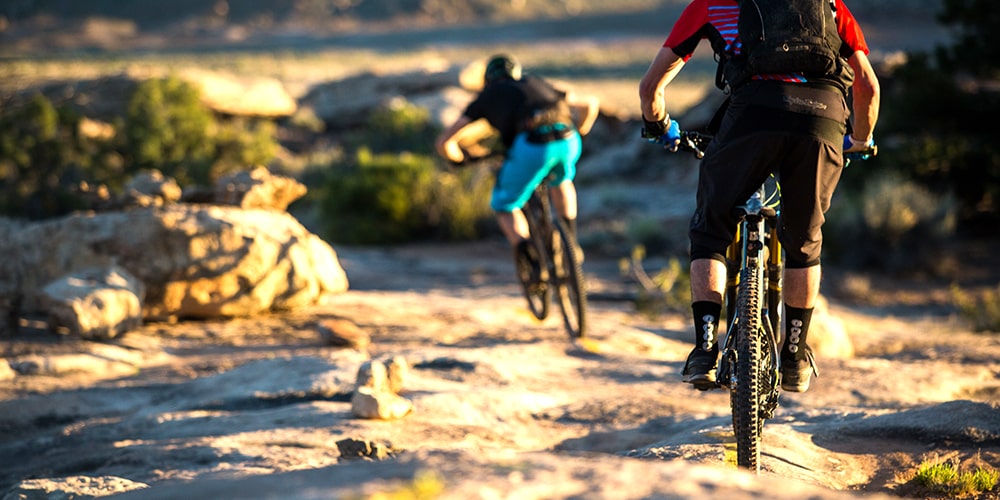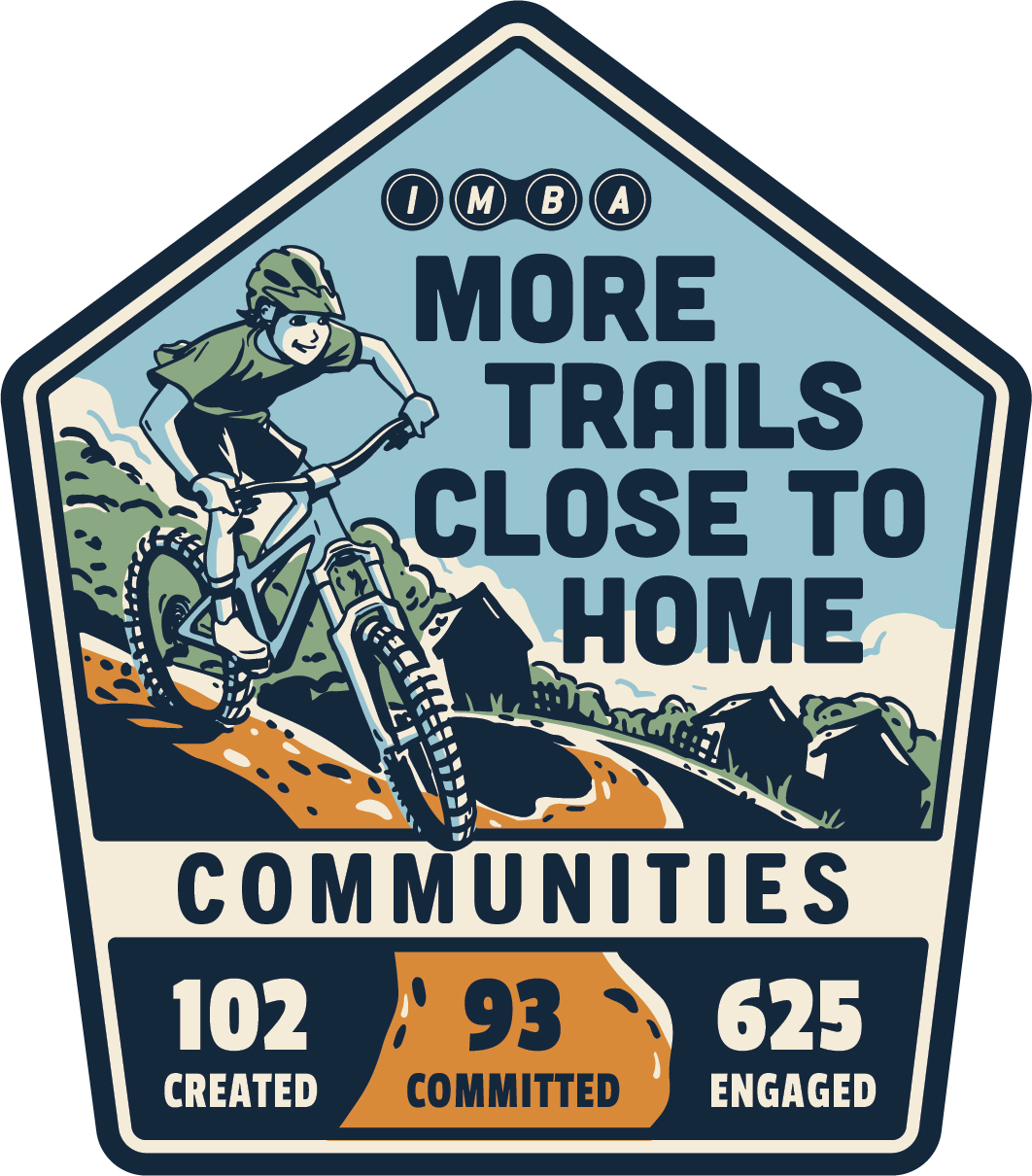Riding the Wave in Williamstown
Often overlooked but inherently important: trail signage can make or break the overall trail experience.

In May 2024, Matt Brabender, Staff Planner with IMBA Trail Solutions, was on site in Snowshoe Mountain, West Virginia, finishing up a fresh signage package. Much consideration and coordination go into making sure the on-the-ground wayfinding is just right, so we sat down with Matt for a Q&A to get the scoop on how this process worked:
IMBA: What all goes into those design considerations as you’re working on a package like this?
Matt: For the design of the kiosk maps, hub signs, and carsonite trail signs, I worked with Gary Barden to create unique and fresh designs that fit Snowshoe’s “vibe.” We collaborated closely with Ken Gaitor and Preston Cline from the Snowshoe team to ensure we were on the right track with the designs. Generally, signage needs to be; nice to look at, functional, durable and offer clear and essential information such as maps, trail difficulty, rules & regulations, and points of interest without overwhelming the user. The materials for the kiosks/posts/hubs should be robust enough to withstand weather conditions, vandalism, and long-term wear, often requiring treated wood, metal, or composites that resist rot, rust, and UV damage (We used a suite of Rockart Signs for this project). The overall design of the signs should feel “at-home” with the natural surroundings and the overall aesthetic of the trail network, using colors and materials that complement the environment but still stand out to the user.


IMBA: Why did Snowshoe hire Trail Solutions to do this project?
Matt: The previous signage was inconsistent, and many trails were entirely unmarked, leading to users frequently getting lost and confused. This project was particularly challenging because many of the trails were not previously mapped or named, so we had to use all the GIS and mapping tools available to ensure every trail was accurately represented on the map. This was a large chunk of the project before we even started design for the trailhead maps!

IMBA: How many days did the physical install take? What considerations do you have in mind with sign installs at hubs, trail junctures, etc?
Matt: The physical installation of the signage took nine days. I worked with Will Jordan and Trey Rush, who have extensive knowledge of Snowshoe, which proved to being KEY to getting this project done! Will and Trey handled the installation of the trailhead kiosks and accessible trail hub signs, as these required a mini excavator to install. I focused on hiking the network to install the carsonite posts and stickers. Once I finished the sign post installation, I helped the guys with the final two hub sign installs, which turned out to be a challenging mission since they were located several miles from any road access.

All four main trailhead/access points received a 48x48” kiosk with an inset specific to that region of the trail network. Nine trail hub signs were placed throughout the network at key decision points, oriented to face north, and located in areas large enough to accommodate multiple people and through traffic. Over 230 carsonite trail signs were installed at the start and end of each trail and at intersection points to eliminate any uncertainty for trail users (I hiked 43 miles in those nine days haha!).

IMBA: What’s your favorite part of work like this?
Matt: My favorite part of this project was seeing the project all the way through to completion! After spending a year looking at the network on a computer screen, it was incredibly satisfying to finally ride the trails and see the signage system we designed in action. Knowing that our work would significantly improve the Snowshoe experience made the entire process feel very rewarding. It was also great to have the final meeting with Ken and hear how thrilled he was with the outcome!


